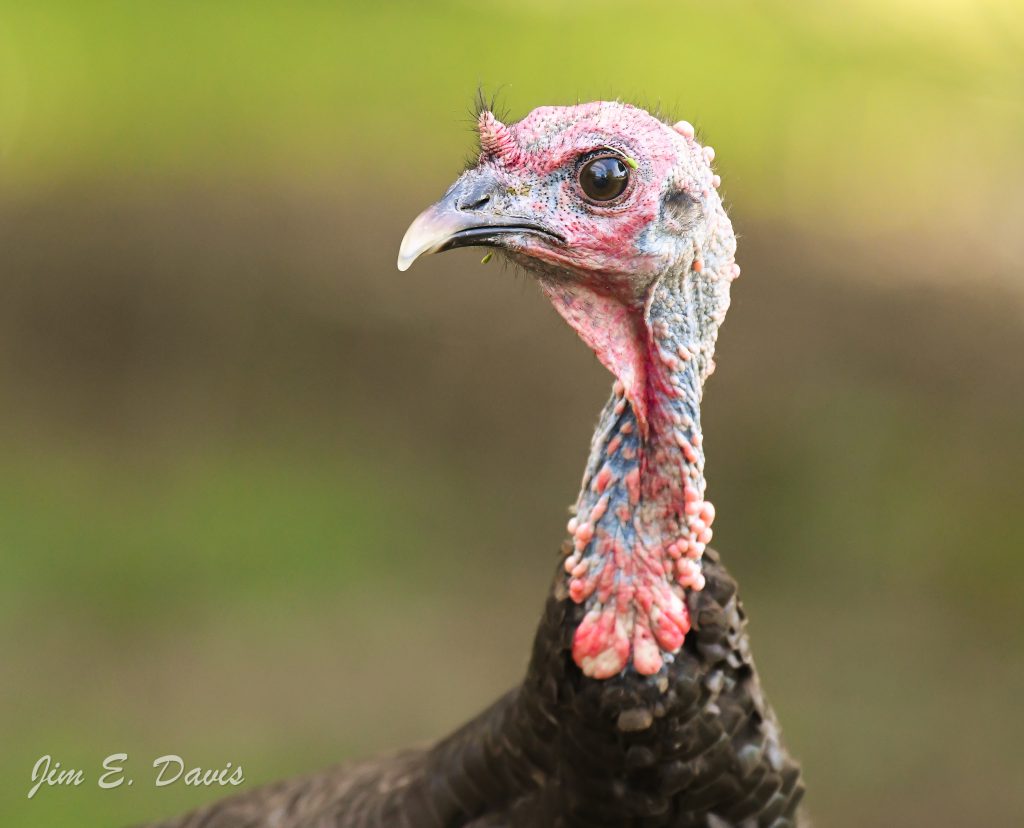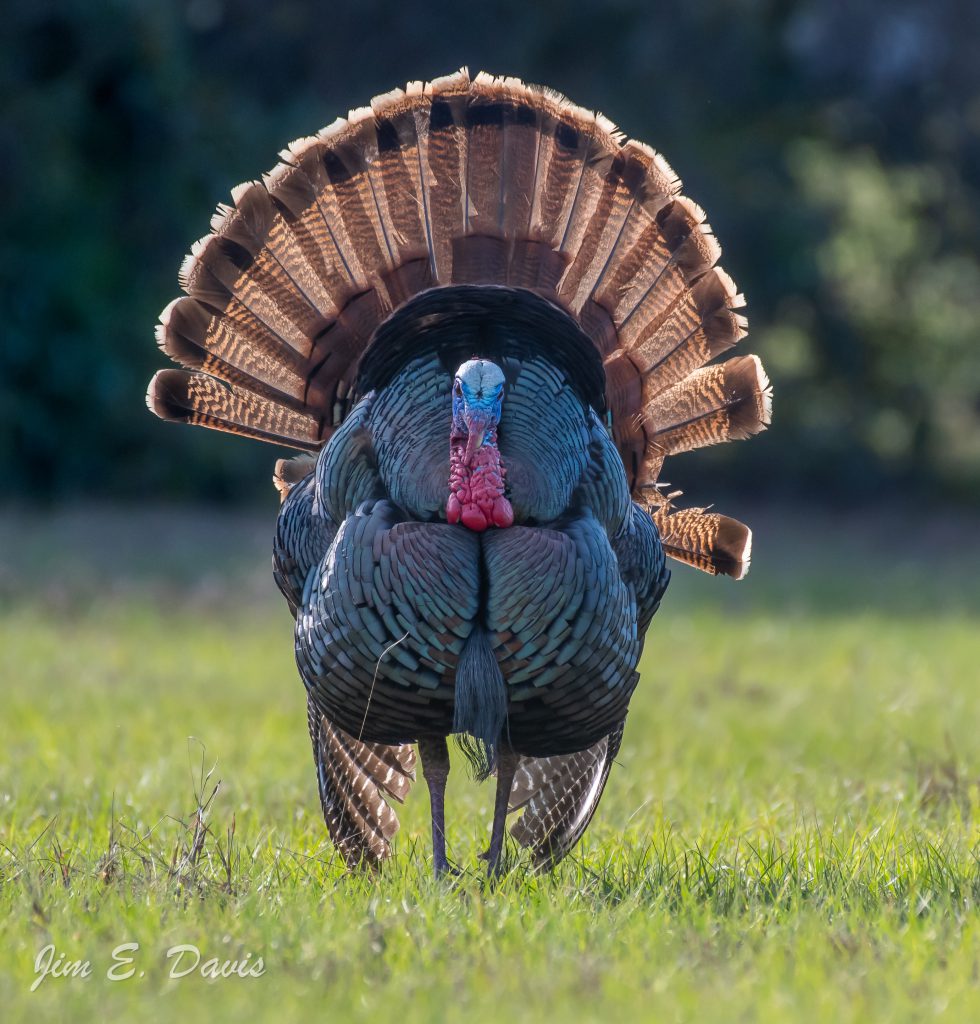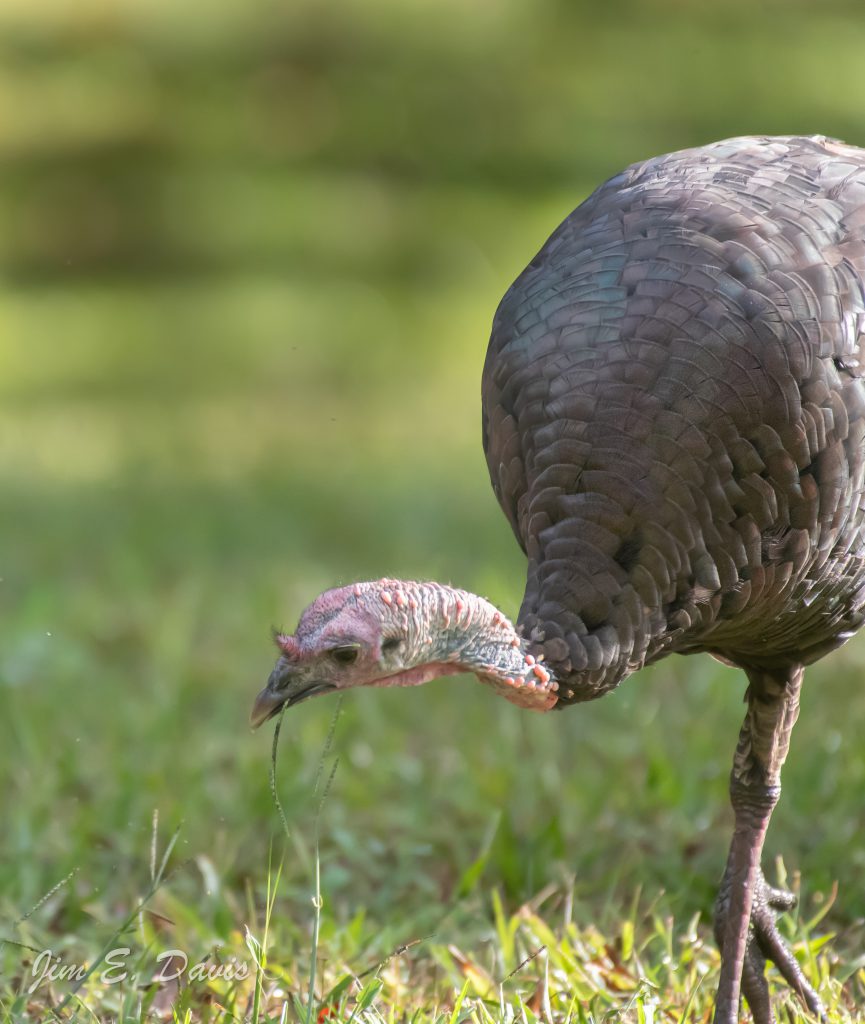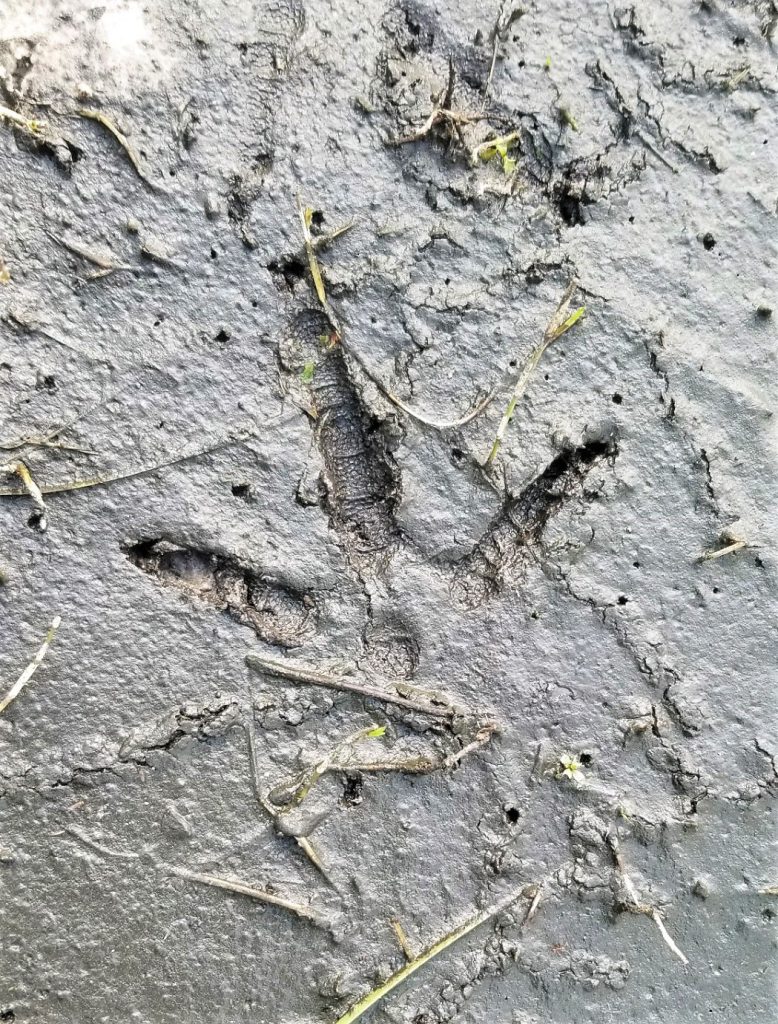Common Name: Wild Turkey
Status: Native Species
Scientific Name: Meleagris gallopavo
Occurrence: Year-round Species

Identification: Easily one of the most recognized native bird in the United States. The wild turkey is a very large bird that has a length of about 45″ and can weigh-in averaging 5 lbs. to a hefty 23 lbs. Wingspans average between 4 to 4.5ft in length. Wild turkeys are dark-colored birds, having bronze or green iridescent colored feathers. Wings have small white bars against the dark feathers. The tips of the tailfeathers can be light brown or white. Wild turkeys exhibit sexual dimorphism, simply meaning you can tell the difference between a male and female. Adult males or “toms” are much larger than the females and have several distinguishing features. Males in full courting display have a red and blue bald head. This colorful fleshy skin is called a “snood”. They also have a dewlap or more accurately referred to as a “wattle”. These wattles perform several functions. In courting a female, the wattle is filled with extra blood and appears a vibrant crimson color. Wattles also help release excess heat, since turkeys cannot sweat. Males have a “beard”. This is not actually hair, but thin dark-brown or black feathers that protrude from the chest. Adult males have a beard averaging 7 to 9″, while young males, “Jakes”, beards average less than 6″. Males also have spurs that continue to grow as they age. Jakes spurs are less than 1/2″ and are round, while a fully grown Toms spurs average 1 1/4″ and are very sharp. Both males and females also have small fleshy bumps on their head and throat called “caruncles”.

Description: Wild turkeys usually hang out in flocks. You may see flocks of only hens, jakes, or toms. Other parts of the year, you will seem them intermixed. Spring time is when males come on full display. Male toms can be seen strutting. They will fluff out their body feathers and fan their tail in this very impressive display to entice female hens. Males will mate with several females. Once mated the female starts making the nests, which are on the ground. These nests are more like depressions, consisting of dead leaves, grass, and other plant vegetation. Clutch size averages about 10 to 15 and incubation is about 25 to 31 days. When hatched, the young are covered with down until about 8 weeks. In this time, young will slowly develop feathers. After 8 weeks, the young have developed all of their feathers and capable of flight. There is a size difference between adults and juveniles at this stage. It will take several more months for the young to reach adult sizes. Wild turkeys will usually stay in community flocks, though not unusual to see a lone gobbler in a field. Wild turkeys are incredibly smart and wary of predators. When they see a predator approaching, they may run or simply fly away. During the day they actively feed, and will roost in trees at night.

Diet: Wild turkeys are ground foragers. They feed on acorns from oaks, seeds from grasses, and may eat an occasional small reptile, amphibian, or arthropod. They will also feed on small berries and any bulbs that may be dug up from scratching the forest floor.
Interesting Facts:
- 10% of female turkeys may have a beard, although not as grandiose as a male this may be confusing for identification.
- A male is called a “Tom”, a female called a “Hen”, and a young male one year of age is called a “Jake”.
- Newly hatched turkeys are called “Poults”.
- Wild Turkeys in the Rocky Mountains have whitish tips on their tail feathers, while turkeys from other parts of the country have light-brown tailfeather tips.
- The two domesticated birds native to the New World are the Muscovy duck and wild turkey.
- Turkeys can swim, tucking their wings in close and kicking with their feet.
Cover Photo and Other Photo Credit: Jim E. Davis
Pictures may not be used unless receive written permission from Jim E. Davis
Pictures must be used for educational purposes only.

References: https://www.allaboutbirds.org/guide/Wild_Turkey/overview
https://myfwc.com/wildlifehabitats/profiles/birds/game-birds/wild-turkeys/
https://nwdistrict.ifas.ufl.edu/phag/2022/06/24/fwc-2022-wild-turkey-summer-survey/
https://ipm.ucanr.edu/home-and-landscape/wild-turkeys/pest-notes/
https://www.audubon.org/birds-of-america/wild-turkey
https://www.audubon.org/news/what-are-wattles
https://www.audubon.org/news/lets-talk-turkey-beards
https://www.tn.gov/twra/hunting/big-game/turkey/wild-turkey-identification-tutorial.html
https://www.michigan.gov/dnr/things-to-do/hunting/turkey/using-spur-length-to-age-a-turkey
 1
1
